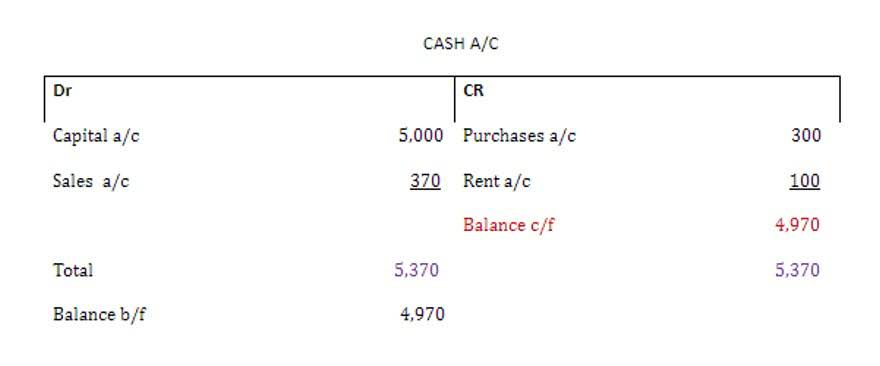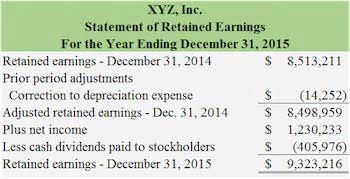
Also called a profit and loss statement, an income statement shows your business’s earnings for a given timeframe. Creditors and investors often turn to these statements to assess your business’s growth, profitability, and value. There are five income statement accounts types of accounts in the general ledger found in your accounting software, and they’re found on either the balance sheet or the income statement. An income statement is a report of your business’s profits and losses over a specific period.
Single-Step Income statement Example
Utilize accounting software and a detailed checklist to ensure accurate entries and comprehensive income tracking. At the bottom of the income statement, it’s clear the business realized a net income of $483.2 million during the reporting period. A monthly report, for example, details a shorter period, making it easier to apply tactical adjustments that affect the next month’s business activities. A quarterly or annual report, on the other hand, provides analysis from a higher level, which can help identify trends over the long term. Revenues are the first element of income statement which always stays on top.
Foreign Currency Accounting for Small Businesses

Automating data entry processes and conducting regular audits can help reduce manual data entry errors like duplication and omissions. It’s important to do monthly account reconciliations to maintain data integrity and ensure financial records are accurate and follow the rules. A financial professional will offer guidance based on the information provided and offer a no-obligation call to better understand your situation. 11 Financial is a registered investment adviser located in Lufkin, Texas. 11 Financial may only transact business in those states in which it is registered, or qualifies for an exemption or exclusion from registration requirements. 11 Financial’s website is limited to the dissemination of general information pertaining to its advisory services, together with access to additional investment-related information, publications, and links.
Understanding the Role of Depreciation and Amortization
However, it uses multiple equations to determine the net profit of the company. The process of amortization is usually done using the straight-line method, wherein the cost of the intangible asset is divided by its useful life, resulting in an annual amortization expense. Revenue accounts include Sales, Service Revenues, and Other Income such as Rent Income, Royalty Income, Gain on Sale of Fixed Asset, etc. After reducing COGS and general expenses, interest expense is the third place you look to improve your bottom line.
- The balance sheet tells you where you are, while the income statement tells you how you got there.
- There is no gross profit subtotal, as the cost of sales is grouped with all other expenses, which include fulfillment, marketing, technology, content, general and administration (G&A), and other expenses.
- At the end of the accounting year, the balance in each of the accounts used for recording operating expenses will be closed in order to start the next accounting year with a zero balance.
- If total revenue minus total operating expenses is a negative number, this is considered an operating loss.
- These statements summarize the financial transactions, including revenues, expenses, and net income, allowing you to assess a company’s profitability and overall financial health.
Large companies may have thousands of income statement accounts in order to budget and report revenues and expenses by divisions, product lines, departments, and so on. Finally, using the drivers and assumptions prepared in the previous step, forecast future values for all the line items within the income statement. For example, for future gross profit, it is better to forecast COGS and revenue and subtract them from each other, rather than to forecast future gross profit directly.
A line-by-line analysis of an income statement

A single-step income statement, on the other hand, is a little more straightforward. It adds up your total revenue then subtracts your total expenses to get your net income. Vertical analysis refers to the method of financial analysis where each line item is listed as a percentage https://www.bookstime.com/ of a base figure within the statement. This means line items on income statements are stated in percentages of gross sales instead of in exact amounts of money, such as dollars. A business owner whose company misses targets might pivot strategy to improve in the next quarter.
- By comprehending both income before taxes and tax expenses, you can gain a clear understanding of a company’s financial performance and its tax obligations.
- After calculating income for the reporting period, determine interest and tax charges.
- Gains represent all other sources of income apart from the company’s main business activities.
- It also helps business owners determine whether they can generate high profit by increasing prices, decreasing costs, or both.
- This is due to they do not have or have only a small amount which is usually not directly related to the main services they provide in their operations.
- In the service industry, it’s the cost of paying wages and providing the supplies you need to perform those services.
Operating Revenue

Your income statements are most powerful when used in tandem with your balance sheet and cash flow statements. An income statement is an important financial report that provides rich information on how a business or company is doing and how it’s likely to perform in the future. Used in both managerial and financial accounting, it is an invaluable resource to internal and external stakeholders alike.

